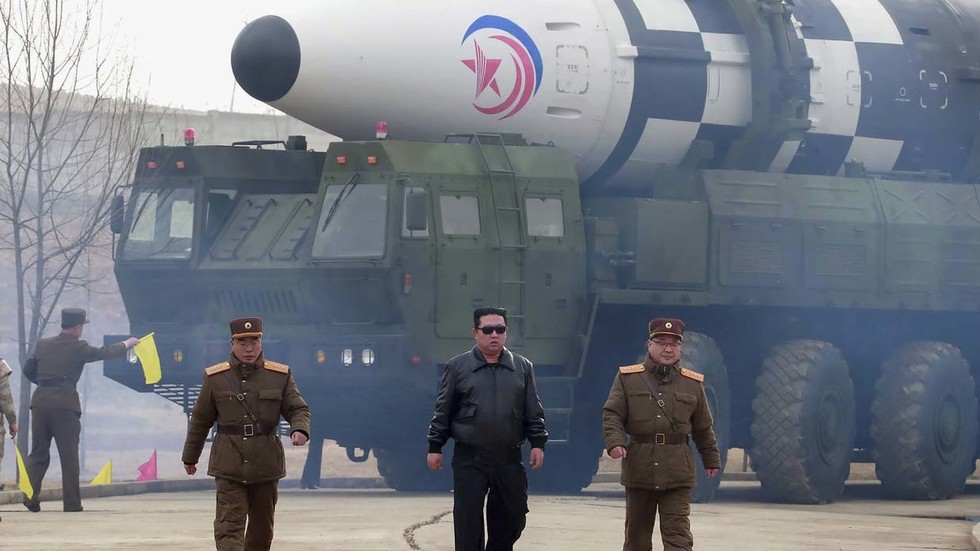Recent incidents and growing speculation have raised alarms regarding potential conflict on the Korean Peninsula, leading some to claim that “the Korean Peninsula is on the brink of war.” While tensions often run high, particularly given the historical enmity between North and South Korea, the current situation, though concerning to those unfamiliar with the complexities of the region, does not warrant extreme anxiety. A few key events have contributed to the elevated tensions, notably the South’s deployment of drones over Pyongyang as part of a propaganda campaign targeting the North. Despite the provocative nature of these actions, experts argue that the situation remains manageable, primarily because both sides understand the disastrous consequences that would arise from any significant military confrontation.
The use of drones by South Korea, which reportedly dropped anti-North Korean leaflets over Pyongyang, escalated rhetoric between the two nations, with North Korea responding strongly. This act, while reminiscent of past balloon-based propaganda campaigns, has raised concerns due to the implications of violating airspace, an action viewed seriously under international law. Notably, South Korean officials initially denied involvement but later took a vague stance of uncertainty. This shift hints at a possible rogue faction within the South Korean military attempting to assert its influence. In retaliation, North Korea has continued its own propaganda efforts by sending garbage-filled balloons back to South Korea, which, while disruptive, has avoided the more lethal alternatives of direct military action. Still, the atmosphere remains charged, with North Korea ordering its artillery forces to readiness and pushing for military enlistment campaigns, indicating a heightened state of alert.
At the same time, North Korea’s destruction of communication routes to South Korea signifies a drastic shift in strategy, reflecting its abandonment of the long-held goal of reunification. Once viewed as a potential path toward unity, reunification has now become less relevant in the North’s policy, which recognizes the South as a hostile entity. This reality is underscored by South Korea’s own acknowledgment of North Korea’s status as an ‘anti-state’ under its National Security Act. Pyongyang’s focus appears to be defensive, preparing for potential South Korean aggression rather than initiating conflict, especially in light of existing mutual defense agreements involving the US. The removal of roads corroborates North Korea’s transition from a confrontation strategy to one grounded in defense.
In another critical development, the ratification of a strategic partnership between Russia and North Korea underscores the shifting geopolitical landscape of the region. Analysts are closely examining the implications of this treaty, particularly its article obligating support in case of war. While some interpretations suggest that this could signal a new wave of military cooperation, the nuanced language within the treaty highlights that not all armed conflicts are classified as wars—in this instance, Russia’s own operations complicate any clear alliance framing. Importantly, renewed consultations between Moscow and Pyongyang are more likely to focus on diplomatic resolutions rather than escalating conflicts, as neither state desires the repercussions of a major conflict near their borders.
Fears of North Korean military involvement in Ukraine, as suggested by claims from Ukrainian officials, have also surfaced in discussions about the Korean Peninsula’s stability. These speculations, while circulating in media and fueled by a need for justifications for Western aid, lack substantial evidence. Both countries have their own immediate concerns that would deter significant military deployments far from their borders. The narrative surrounding North Korean troops allegedly aiding Russian military efforts appears to be more rooted in propaganda than reality, with many claims founded on questionable sources or unfounded narratives reflecting the broader geopolitical strife.
Ultimately, despite speculative claims about imminent conflict on the Korean Peninsula, the realities of mutual deterrence, national pride, and historical context suggest that dramatic escalations remain unlikely. Both nations understand that any military engagement could lead to catastrophic consequences for all involved, particularly given the presence of nuclear arsenals and the potential for international intervention. It is crucial to recognize that conflicts in the region tend to arise from miscommunication or provocations rather than deliberate actions by leadership. Historical contexts, domestic pressures, and the intricacies of international law add layers to these conflicts, suggesting that while tensions may spike, rational actors on both sides mitigate the risk of full-scale warfare.

